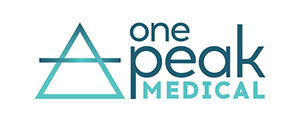Hey, Good Lookin’ Nice Bones!
Keeping Bones and Muscles Healthy as You Age
Most people don’t start thinking about the health of their bones until midlife or later, which is often too late when the goal is to protect against significant bone loss and fracture risks.
Researchers have confirmed that addressing the strength of one’s bones should start in childhood and continue throughout early adulthood, the time in which the body is building most of the bone that must sustain it through life. By age 20, girls have gained approximately 95% of their peak bone mass. For boys around this age, it is a few years later, about age 22. However, there is a two-year time frame during early adolescence that is crucial for bone development, when 26% of total adult bone is made. For girls, it typically begins at age 12 and in boys age 14. During this 2-year period of rapid bone growth, the amount of bone made in kids is roughly the same as the amount of bone loss over the thirty-year time span in adults between the ages of 50 to 80.
In addition, there is repeated evidence that strongly indicates increasing peak bone mass by 10% during childhood will delay osteoporosis (thinning of bones) by 13 years later in life. Unfortunately, three of the main factors that have the greatest influence on bone mass are out of our control: age, gender, and genetics. However, there are external factors—physical activity, diet, hormones, and bone-building nutrients such as calcium and vitamins D and K—that are critically important to bone health throughout life, and are also highly attainable.
Exercise
Exercise affects the strength of the bones in two ways. First, in response to the pressure of what we call “weight-bearing exercise,” like walking, jogging, jumping, yoga, Pilates, tennis, golfing, martial arts, team sports, or moving your body on the floor/ ground to accelerate the heart rate, and second in response to the stress exerted by muscle contraction. The amount of exercise recommended for maximum benefit is 30-plus minutes, four days per week.
On average, children and certainly adults with higher bone mineral density sustain fewer fractures. Getting kids and adults away from electronics and playing outside doing different types of activities that move the body on the ground is highly effective at building and preserving bone density.
Weight-Bearing Exercise
Weight bearing exercise is the most effective remedy against osteoporosis. The resistance places tension on your muscles, which stimulates your bones to create fresh, new bone. The muscles you build will not only support your balance but put constant pressure on your bones. Walking lunges help by placing more pressure on your hips without having to do weight lifting exercises.
Foods for Optimal Bone Health
In place of soda or soft drinks, drink vegetable juice, coconut water, milk, green tea, or water. Instead of doughnuts and packaged cookies, eat fruit, desserts low in sugar, frozen yogurt, Greek yogurt, or homemade high-fiber, low-sugar muffins (there are excellent high fiber, gluten-free muffin recipes that help support bones). Consider replacing trans-fats and saturated fats with polyunsaturated and monounsaturated fats by eating avocados, olives, nuts, and fatty fish. A well-balanced diet with at least six servings of veggies and fruits per day is ideal; focus on sulfur-rich veggies such as kale, broccoli, and cabbage.
You also need protein, magnesium, potassium, phosphorous, zinc, manganese, boron, and Vitamins B12, C, and K—which is why you need nutrient-dense foods.
Besides including nutrient-dense foods in your diet, it is especially important to get enough protein, because protein makes up 50% of the volume of bone. With protein-rich foods, include enough calcium and alkalizing fruits and vegetables to balance out the full support for bone health.
Vitamin and Mineral Supplementation
Consume calcium-rich foods like dairy (organically produced is optimal), leafy green vegetables, citrus fruits, carob, and sesame seeds. Also consume magnesium-rich foods like whole grains, fish, nuts, seeds, spinach, and soya beans. The biological role of Vitamin K2 is to help transfer calcium from soft tissue to places where it is needed the most—bones and teeth. Choose animal products such as eggs, butter, cheese (gouda and brie), meats, fermented foods such as soya beans, or vegetables, cabbage, spinach, bok choy, and broccoli. Vitamin D is important to ensure that calcium is properly absorbed in the intestines. Most people need a minimum of 2,000 IU daily of Vitamin D3.
Hormone Health
Balancing and replenishing declining hormones as men and women age is a powerful support to the health of the bones. It is imperative that bone health be supported by optimal hormone health. Early menopause, or andropause for men, substantially increases the risk of early bone loss. Checking hormone levels while providing a safe and balanced treatment plan is optimal for prevention of muscle and bone loss and overall wellbeing.’
Other Things to Avoid
- Smoking and excessive drinking— impair calcium absorption and inhibit the growth of bone-building cells
- Bone robbing drugs—corticosteroids (prednisone), anti-seizure medications, chemotherapy
- Over-dieting
- Antacids that contain aluminum, which can interfere with calcium absorption if you take too much
- Chronic kidney, liver, or lung disease
- Inflammatory bowel or poor absorption, preventing the absorption of bone nutrients
- Repetitive life stress
The Bare Bones Of It All…
Although it’s particularly important to take steps to build strong and healthy bones during childhood and adolescence, there are many lifestyle choices you can practice during adulthood to protect bone health, too.
Here’s to the health of your bones!
Originally published in the Spring 2015 issue of Southern Oregon Magazine

